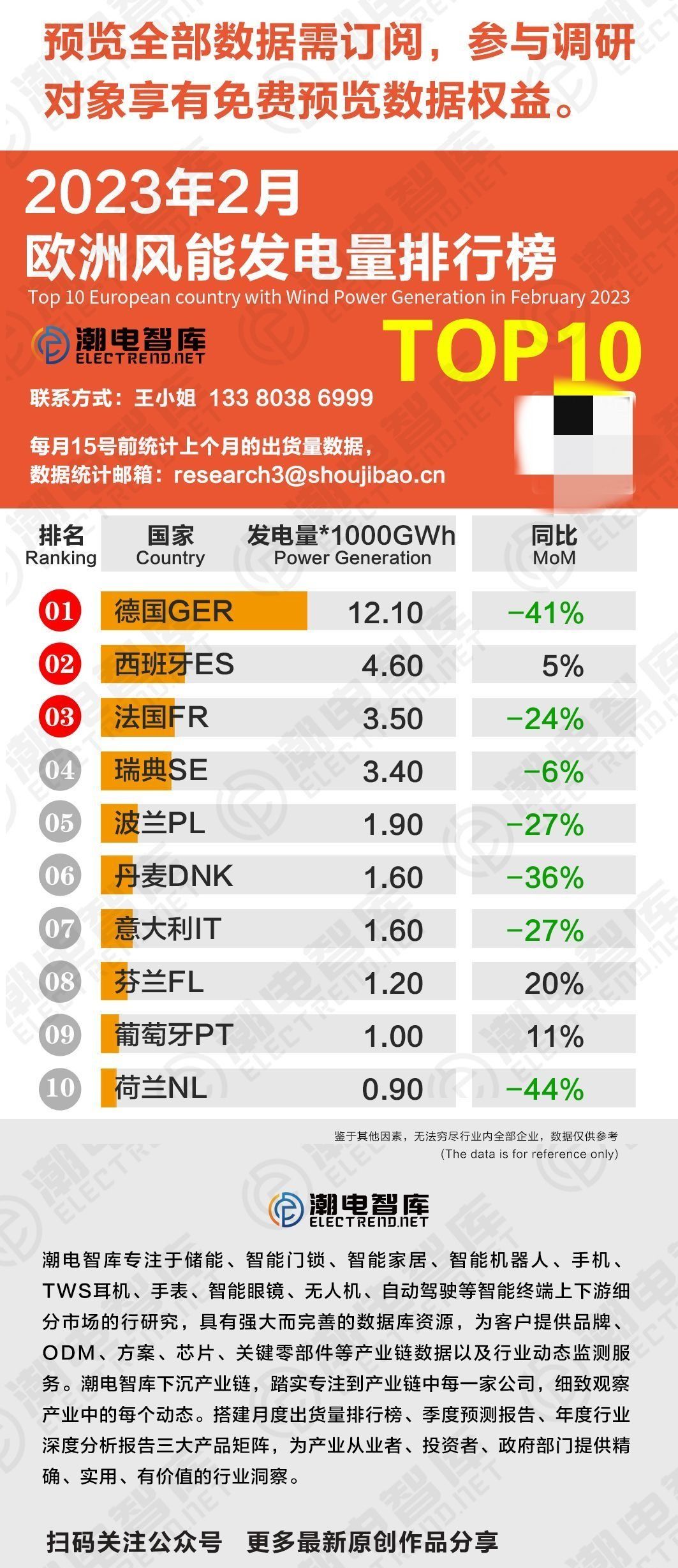得益于分布式储能的爆发成果,光伏发电的增长,促使欧洲2023年可再生能源结构发生变化:风能发电量出现相对下滑。
据潮电智库数据统计,2023年2月欧洲风能发电量TOP10国家总计发电量31.8TWh(1TWh=1000GWh),TOP10国家占比欧洲2月风能发电总量88.6%,其中,7个国家风能发电量较去年同期均出现下滑。
排在第一的德国,2月风能发电量12.1TWh,占比欧州当月33.7%的风能发电量,同比下滑41.3%。
风能发电量4.6TWh的西班牙位列第二。和芬兰,葡萄牙成为当月仅有的三个发电量同比增长的国家。

西班牙与葡萄牙彼此相邻,两国拥有狭长的海岸线,风流环绕国土四周,并且强度较大,因此即使欧洲大部分国家风能发电量均出现下滑的情况下,此三个国家也能在海上风能,有着进一步的发挥空间。

Top 10 European Wind Energy Generation in February 2023
Thanks to the explosive results of distributed energy storage and the growth of photovoltaic power generation, the renewable energy structure in Europe will undergo changes in 2023: wind power generation will experience a relative decline.
According to data from the Electrend, in February 2023, the top 10 countries in Europe generated a total of 31.8 TWh (1 TWh=1000 GWh) of wind power. The top 10 countries accounted for 88.6% of Europe's total wind energy generation in February, with seven countries experiencing a decline in wind energy generation compared to the same period last year.
Germany, ranked first, generated 12.1 TWh of wind energy in February, accounting for 33.7% of the wind energy generation in Europe that month, a year-on-year decrease of 41.3%.
Spain, with a wind energy generation capacity of 4.6 TWh, ranks second. Together with Finland and Portugal, they became the only three countries with year-on-year growth in electricity generation that month.
Spain and Portugal are adjacent to each other, with long and narrow coastlines, wind currents surrounding the country, and high intensity. Therefore, even if most countries in Europe experience a decline in wind power generation, these three countries can still generate wind energy at sea and have further room for development.





